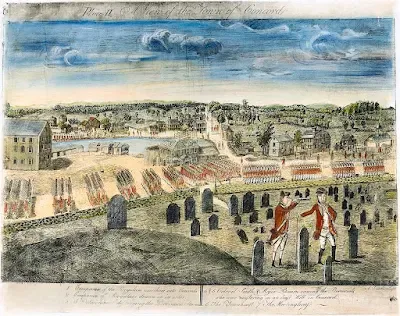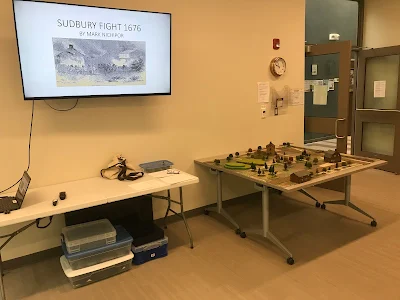One of the most influential military books of the 18th Century was “A Treatise of Military Discipline” by Colonel Humphrey Bland. Officers learned how to be a commander by reading text books. This book shows up in the libraries of numerous officers in the British and also American Army officers libraries at the start of the American Revolution; including George Washington; who's personal library included Humphrey Bland "A Treatise of Military Discipline (9th ed., London, 1762)"; Lancelot Théodore, comte de Turpin de Crissé, "An Essay on the Art of War, translated by Capt. Joseph Otway" (London, 1761); Roger Stevenson, "Military Instructions for Officers Detached in the Field" (Philadelphia, 1775); Captaine de Jeney, "The Partisan: or, The Art of Making War in Detachment," translated by J. Berkenhout (London, 1760); and William Young, Manœuvres, or Practical Observations on the Art of War "(London, 1771).
What did these books tell us in how to conduct a march? Let us quotes from Bland who had a chapter entitled “…Marching of a Regiment of Foot, or a Detachment of Men, where there is a Possibility of their being Attacked by the Enemy.” He suggested forming a strong "van guard" and a "rear guard." The purpose of the van-guard was “to reconnoiter, or view, every place where any number of men can lie concealed, such as woods, copses, ditches, hollow ways, straggling houses, or villages, through which you are to march or pass near…” The rear-guard was “to take up all the soldiers who shall fall behind the regiment” and to provide security for the rear of the column and prevent it from “being fallen upon (attacked) in the rear, before they have notice to prepare for their defense.” In addition “small parties, commanded by sergeants, marching on the flanks (sides) of the battalion with orders to examine all the hedges, ditches and copses which lie near the road…"
Lt. Col. Smith organized his march to Concord with the combined ten Light Infantry companies* first followed by the eleven Grenadier ** companies. As they got closer to Lexington he detected six Light Infantry companies to march ahead of the column and capture the bridges in Concord.
It is known from the statement of private James Marr 4th light company that there was a "advanced guard of a sergeant and six or eight men." In addition a number of volunteers who went out with the march joined the advanced guard as we know from the account of Lt. William Sutherland.
Within the column how did the individual companies form? According to Captain William Souter who commanded the Marine light company; "our companies were not able to march more then half of its front on the open road, or more properly speaking, in two platoons, the second in the rear of the first."
 |
Brigadier General Hugh Earl Percy who led the reinforcements that afternoon had been commanding his Brigade for over a year now. On a number if occasions he marched the entire Brigade out if Boston into the countryside for exercise. Lt. Frederick MacKenzie of the 23rd Royal Welch Fusiliers, who marched with Percy, wrote that the brigade “… marched in the following order, Advanced guard of a captain and 50 men; 2 six-pounders, 4th Reg’t, 47th Reg’t, 1st Bttn of Marines; 23rd Reg’t, Rear guard of a Captain and 50 men.” This tactic was straight out of Bland’s Treatise. In the Lord Percy papers there is a drawing of a march by the 1st Brigade. The drawing is a brilliant illusion of how to conduct a march with advanced guards and flankers.
* light infantry companies- 4th, 5th, 10th, 23rd, 38th, 43rd, 47th, 52nd, 59th and Marines.
** Grenadier companies - 4th, 5th, 10th, 18th, 23rd, 38th, 43rd, 47th,52nd, 59th and Marines.


.jpeg)
.webp)


.jpeg)





.jpeg)


.jpeg)
